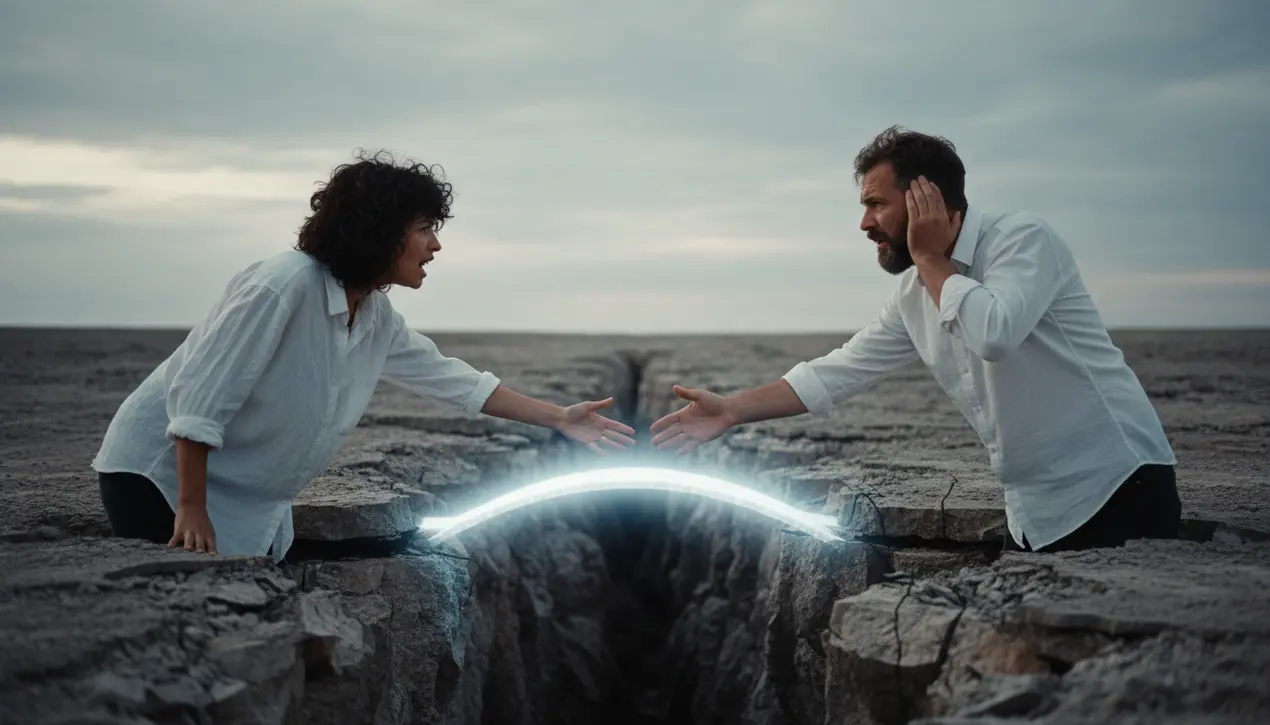
OthereducationOnline Learning
The Art of Bridging Divides: Carl Rogers' Blueprint for True Communication
LA
Laura Bennett
2 days ago7 min read1 comments
It starts with a spark—a moment of perfect synchronicity where two people connect on a shared frequency, and the chasm between individual consciousnesses seems to disappear. In these exhilarating exchanges, you feel deeply understood.But inevitably, the precipice reappears. You find yourselves in the same room, having the same conversation, yet inhabiting entirely different realities.This is more than a simple misunderstanding; it's a core human challenge. What happens when the very bridge of communication collapses? This question, while deeply personal, resonates on the world's largest stages.In 1951, amid the escalating tensions of the Cold War—a terrifying global-scale communication failure—renowned psychologist Carl R. Rogers addressed the Centennial Conference on Communications at Northwestern University.Rogers, whose work would reshape therapy and education, believed the principles that could heal a fractured relationship could also de-escalate international conflict. His central thesis was deceptively simple yet profoundly difficult: genuine communication requires unconditional positive regard.This is not passive tolerance, but an active, empathetic effort to see the world from the other's internal frame of reference—to understand their feelings and meanings without immediately judging, correcting, or preparing a rebuttal. Couples therapists often report that the most common issue they encounter isn't disagreement, but a fundamental failure to feel heard.Partners become so intent on being right, on winning the argument, that they stop listening to the underlying emotion—the fear, the hurt, the need for validation. This triggers a defensive feedback loop where both individuals feel increasingly isolated, their original connection devolving into a battle of wills.Rogers contended that breaking this cycle demands a courageous suspension of the self. You must step out of your own perspective, if only for a moment, and genuinely attempt to walk in the other's shoes, to restate their position until they feel truly understood.This act of empathetic listening isn't about surrendering your own views; it's about creating the psychological safety necessary for collaborative problem-solving to begin. The consequences of unaddressed communication breakdowns are everywhere—from strained family dinners and toxic workplaces to our polarized public square.We are quick to attribute malice, to label the other side as irrational or evil, rather than seeking to understand the experiences that shaped their worldview. The solution, as Rogers outlined, is not a technical fix.It is a human one. It requires vulnerability, patience, and the humility to accept that your reality is not the only one. It is the arduous, patient work of rebuilding the bridge, plank by plank, with the sturdy materials of empathy and respect, recognizing that the connection on the other side is always worth the effort.
#communication
#psychology
#Carl Rogers
#relationships
#conflict resolution
#featured
Stay Informed. Act Smarter.
Get weekly highlights, major headlines, and expert insights — then put your knowledge to work in our live prediction markets.
Related News
Comments
Loading comments...
© 2025 Outpoll Service LTD. All rights reserved.